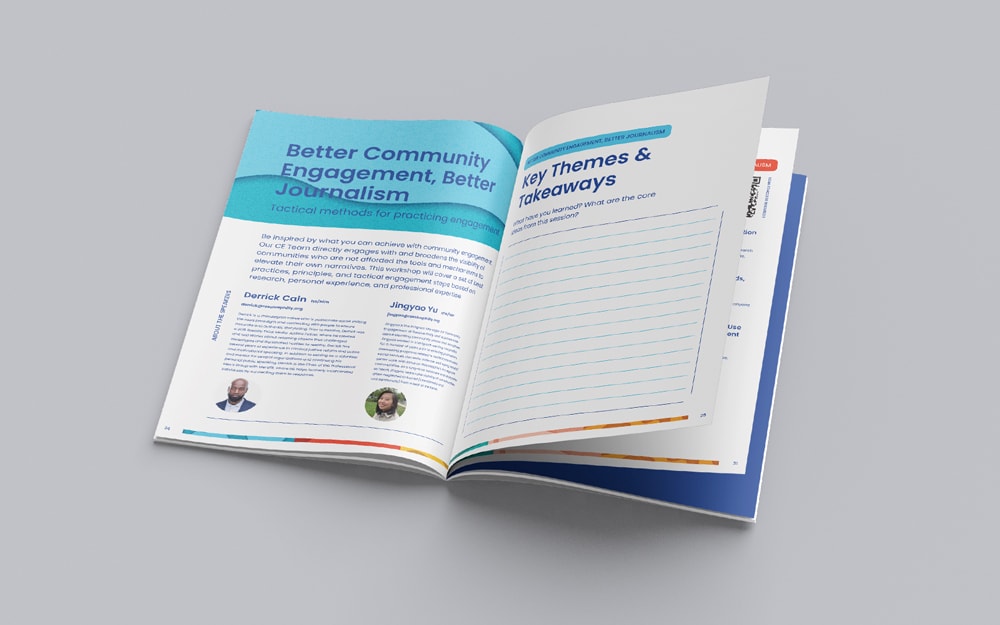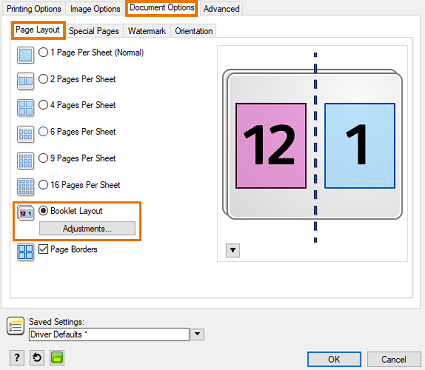The Most Common Mistakes to Avoid in Your Booklet Printing Design
The Most Common Mistakes to Avoid in Your Booklet Printing Design
Blog Article
The Vital Overview to Comprehending Booklet Printing Options and Techniques
The process of pamphlet printing includes multiple considerations that can significantly affect the last item. From picking the ideal style and dimension to understanding the subtleties of binding methods, each choice plays a vital role. In addition, factors such as paper stock and printing methods more influence the efficiency of the brochure. As one navigates these choices, it becomes necessary to grasp exactly how they adjoin and what that means for the general result.
Understanding Booklet Dimensions and layouts
When taking into consideration pamphlet printing, comprehending the numerous layouts and sizes available is crucial for achieving the preferred presentation. Pamphlets can be generated in many formats, including saddle-stitched, spiral-bound, and perfect-bound, each offering distinct advantages. Typical sizes range from typical letter (8.5 x 11 inches) to smaller options like A5 (5.8 x 8.3 inches), enabling adaptability based on material and target audience.Selecting the appropriate dimension can influence both the design and viewers engagement. Larger sizes might match aesthetically driven content, while smaller sized formats may be extra easy to use and mobile. In addition, the variety of pages influences the option of binding method, as thicker brochures may require stronger bindings. Inevitably, comprehending these facets permits a more tailored technique, making sure that the end product lines up with the designated message and aesthetic, enhancing the total effectiveness of the interaction.
Picking the Right Paper Supply

Binding Approaches: Alternatives and Considerations
When it involves binding techniques for booklets, numerous choices are offered, each with unique benefits. Saddle stitch binding provides an affordable option for thinner pamphlets, while ideal binding techniques offer an even more sleek seek thicker publications. Wire-O binding sticks out for its resilience and simplicity of use, making it perfect for papers that need adaptability.
Saddle Stitch Binding
Saddle stitch binding provides a economical and sensible service for setting up booklets, making it a preferred option amongst publishers and organizations. This binding method involves folding sheets of paper in fifty percent and stapling them along the fold line, producing a organized and neat look. Usually ideal for brochures with a lower page matter, saddle sewing is suitable for magazines, brochures, and instructional products. The simpleness of this method permits fast manufacturing and is typically favored for promotional things or short runs. It is crucial to note that saddle stitch binding may not be ideal for thicker brochures, as the spinal column might not hold up under raised weight. Generally, it continues to be a dependable option for several printing jobs.
Perfect Binding Techniques
Perfect binding is an extensively used strategy that offers a specialist and refined coating to brochures and magazines. This method includes gluing the web pages together at the back using a solid adhesive, allowing for a clean side and the ability to hold a bigger variety of pages contrasted to saddle sewing. Perfect binding is particularly appropriate for thicker booklets, such as brochures and yearly reports, where a durable, level spine is preferred. In addition, it offers the choice for a published cover that can be designed to improve aesthetic allure. However, factors to consider such as web page matter, paper weight, and the intended use the brochure need to be taken into account, as they can affect longevity and overall high quality.
Wire-O Binding Options
Wire-O binding, recognized for its resilience and adaptability, provides an outstanding option for pamphlets that require simple page transforming and a professional appearance. This binding technique employs a collection of metal loopholes that hold web pages securely, permitting them to lie flat when open. It is specifically ideal for presentations, catalogs, and guidebooks as a result of its robust nature. Wire-O binding is readily available in various colors and diameters, accommodating various page counts and thicknesses. Additionally, it permits the addition of covers and tabs, improving the pamphlet's total visual. Factors to consider for Wire-O binding consist of the selection of cable color, the size of the loopholes, and the degree of customization desired, all of which can exceptionally affect the last item's look and performance.
Digital vs. Offset Printing: Which Is Best for You?
When picking a printing technique for brochures, comprehending the differences in between digital and counter printing is essential. Digital printing makes use of modern-day technology to generate top quality prints swiftly and cost effectively, making it excellent for short runs or jobs needing fast turnaround times. It permits for personalization, offering the ability to print on-demand with marginal waste.In comparison, balance out printing is a traditional approach that succeeds in creating big amounts with constant high quality. It involves transferring ink from a plate to a rubber covering, then to the paper, which results in vivid colors and precise details. Balance out printing usually needs longer setup times and is much more economical for bigger volumes.Ultimately, the choice in between electronic and balance out printing depends on task demands, budget plan, and preferred quantity. For small, time-sensitive projects, electronic may be the finest selection, while balanced out might be more suitable for bigger, high-grade manufacturings.

Designing Your Pamphlet: Tips and Best Practices
When creating a brochure, cautious attention to format, typeface choice, and shade use can substantially boost its efficiency. A well-structured layout guides the visitor's eye, while proper font styles ensure readability and share the preferred tone. Furthermore, efficient usage of color can stimulate emotions and emphasize crucial details, making the total layout extra impactful.
Selecting the Right Layout
Exactly how can one properly pick the best design for a booklet? It is essential to review the pamphlet's function and target audience. A tidy, organized format enhances readability and engagement. Using a grid system can help in aligning elements regularly, developing an expert look. In addition, incorporating aesthetic pecking order via differing dimensions and placements of photos and message can direct the reader's eye and highlight crucial information. It is likewise crucial to leave sufficient white room, which prevents congestion and enables better emphasis. Finally, testing various formats with mock-ups can supply understanding into how the style performs in real-world circumstances, making sure that the final item meets both aesthetic and useful requirements.
Selecting Ideal Typefaces
An appropriate typeface can substantially enhance the total style of a pamphlet, enhancing the layout and enhancing the web content's message. The selection of font styles should take into consideration readability, particularly for body text, as it ensures the info is obtainable to all visitors. Sans-serif typefaces are usually preferred for electronic layouts, while serif fonts can lend a conventional feel in published products. It's a good idea to restrict font choices to two or three to maintain aesthetic coherence. In addition, typeface dimension plays an important duty; headings must be not overwhelming but distinctive, while body text need to be comfortable for reading. When selecting fonts, placement with the booklet's theme and target market is essential for reliable interaction and aesthetic allure.
Effective Use Shade
Color acts as a powerful tool in brochure design, forming perceptions find this and guiding visitor emotions. It can evoke sensations of excitement, trust fund, or peace, depending upon the hues chosen. Designers ought to consider shade concept principles, guaranteeing that the selected combination aligns with the brochure's message and target market. Making use of warm shades like red and navigate to these guys orange can produce necessity, while cooler tones like blue and eco-friendly foster tranquility.Additionally, contrast plays a crucial role; corresponding colors can boost readability and visual allure. Consistency in color usage throughout web pages even more enhances brand name identification and cohesion. Eventually, efficient color implementation not only captures interest however likewise enhances the pamphlet's objective, making it an important aspect of successful layout.
Finishing Touches: Coatings and Special Effects
While numerous consider the web content and layout of a pamphlet the most crucial components, the ending up touches, such as coatings and unique results, play a vital duty in enhancing its overall allure. Coatings can provide security and resilience, guaranteeing that the brochure withstands damage. Matte surfaces use an advanced, non-reflective surface area, while shiny coverings can make colors show up more eye-catching and vivid. Special impacts, like embossing or aluminum foil marking, include a tactile measurement that can create a memorable impact. These strategies can highlight certain locations, accentuating vital info or developing visual passion. In addition, UV coating can offer a high-shine coating that elevates the general look.Together, these ending up touches not just boost the pamphlet's aesthetic however likewise interact professionalism and reliability and focus to information, inevitably leaving a long lasting effect on the viewers.
Expense Factors To Consider for Pamphlet Printing
Comprehending the numerous cost factors to consider for booklet printing is vital for organizations and companies intending to enhance their budgets. Key variables influencing prices consist of the option of binding, ink, and paper approaches. Higher quality materials, such as superior paper or specialized inks, generally enhance the total expenditure. Additionally, the size and web page count of the pamphlet play a considerable role; larger booklets call for even more resources and time to produce.Another essential factor to consider is the printing strategy, whether electronic or countered, as each has its very own prices structure and suitability for different amounts. Organizations should additionally factor in layout prices, which can differ based upon intricacy and the usage of professional solutions. Eventually, delivery and handling costs can include in the overall, especially for big orders. By reviewing these elements, organizations can make informed choices that align with their financial capacities while attaining the preferred top quality in their published materials.
Often Asked Inquiries
What Are the Environmental Impacts of Brochure Printing?
The environmental influences of booklet hop over to these guys printing include deforestation from paper manufacturing, carbon discharges from transport, and waste generation from disposed of materials - Booklet Printing. Lasting practices, such as utilizing recycled paper and green inks, can reduce these effects
How Can I Guarantee Color Precision in My Brochure?
To ensure shade accuracy in a booklet, one ought to make use of calibrated screens, employ specialist shade profiles, carry out examination prints, and select premium printing services that provide color matching and proofing alternatives for finest results.
What Is the Regular Turn-around Time for Brochure Printing?
The regular turn-around time for brochure printing differs depending on the intricacy and quantity - Booklet Printing. Generally, it varies from a couple of days to 2 weeks, influenced by aspects such as printing approaches and ending up demands
Exist Minimum Order Quantities for Brochure Printing?

Can I Publish Brochures in Several Languages?
Printing brochures in several languages is possible. Numerous printing services supply options for multilingual or bilingual layouts, enabling for effective communication. Careful planning assurances that design aspects fit numerous languages without jeopardizing readability or appearances. Furthermore, elements such as paper supply and printing methods further influence the performance of the booklet. When thinking about brochure printing, understanding the numerous styles and sizes offered is crucial for attaining the wanted presentation. When choosing a printing method for brochures, recognizing the distinctions in between digital and offset printing is crucial. Furthermore, the dimension and web page matter of the brochure play a considerable function; larger brochures need more sources and time to produce.Another important factor to consider is the printing strategy, whether electronic or countered, as each has its own prices framework and suitability for different amounts. The environmental effects of pamphlet printing include deforestation from paper manufacturing, carbon emissions from transport, and waste generation from disposed of materials.
Report this page